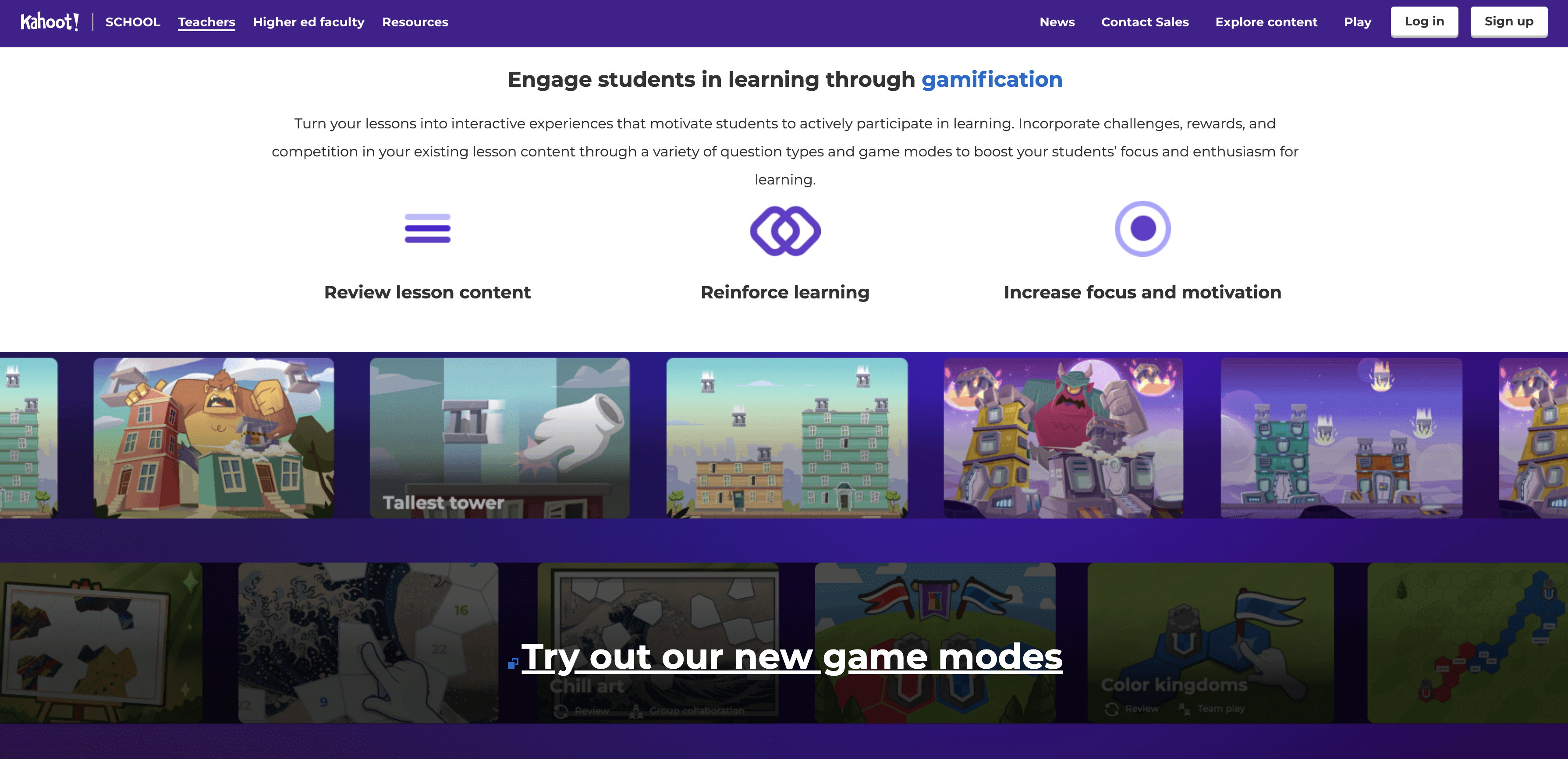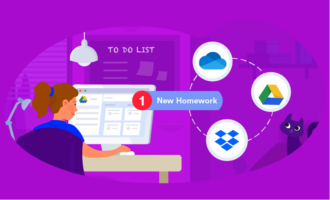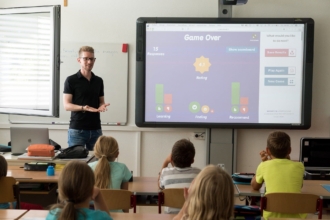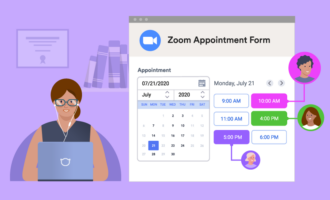In the evolving landscape of education technology, interactive learning platforms like Blooket and Kahoot! have changed the classroom experience. These tools are redefining how students engage with and absorb information. To understand their impact, let’s delve into what these platforms do and how each enhances the educational experience.
Understanding what Blooket and Kahoot! can do for your students
Blooket is a dynamic, game-based online learning platform. It allows teachers to create and host quizzes in a variety of game modes, keeping students engaged and focused. Since it’s a web-based platform, it’s super simple to use and share with your students.
Kahoot! is another well-established interactive, game-based educational platform. It’s known for making it easy to create quizzes, either from scratch or using templates. Kahoot! aids teachers in setting learning objectives and tracking student progress.
Both platforms offer interactive, quiz-based learning experiences, but their approach and execution differ.
Comparing features in depth: Blooket vs Kahoot!
When choosing between Blooket and Kahoot!, understanding the detailed features of each platform help you make an informed decision. Here’s a deeper look into their unique attributes.
Blooket
- Game modes: Blooket sets itself apart with various game modes, each offering a unique way to engage with quiz content. These modes cater to different learning styles and keep the experience fresh and exciting for students.
- Customization: Teachers can significantly customize the gaming experience in Blooket, tailoring it to the needs and interests of their students.
- Assessment and feedback: Blooket is great for assessments, providing immediate feedback to both students and teachers. Educators can also track student performance and identify areas that need more attention.
- Analytics: It offers reports on student performance, allowing educators to track progress and identify areas for improvement.
- Pricing: Blooket operates on a freemium model, offering a basic free version with optional paid upgrades. The Plus version costs $4.99 per month (billed annually) and includes additional features such as exclusive game modes and advanced reports.
Kahoot!
- Easy quiz creation: Kahoot! is renowned for its user-friendly interface, which makes it simple to create engaging quizzes. The platform offers a range of templates to get started quickly.
- Real-time feedback: Kahoot! excels in providing immediate feedback during quizzes, which is crucial for interactive learning and keeping students engaged.
- Scalability: It’s well-suited for larger groups and can facilitate quizzes with hundreds of participants, making it ideal for larger classes or even school-wide events.
- Integrations: Kahoot! offers integrations with other educational tools and platforms like Google Classroom, enhancing its utility in a connected classroom environment.
- Pricing: Kahoot! has a free basic plan as well as paid tiers. Kahoot!+ Start is $3.99 per month per teacher. Kahoot!+ Premier is $7.99 per month per teacher, and Kahoot!+ Max is $9.99 per month per teacher (currently discounted from $12.99). It also has a different pricing structure for teams and schools, with plans starting at $12.49 per month per teacher. The price per teacher decreases as more teachers are added to the plan.
A comparison of similar features
- Messaging and notifications: While both platforms have mechanisms for communication and alerts, Kahoot! has a more developed system for real-time interaction during quizzes.
- Learning analytics: Blooket’s data focuses more on individual student progress, whereas Kahoot! provides a broader overview of class performance.
- Customization and flexibility: Blooket offers more in terms of game customization, while Kahoot! provides more flexibility in quiz creation and execution.
Choosing your digital education tools
When deciding between Blooket and Kahoot!, several key considerations can guide your choice:
- Learning objectives: Choose Blooket for a diverse, game-based learning experience aimed at high student engagement. Opt for Kahoot! if you prefer traditional quiz formats with real-time feedback — ideal for objective assessments and progress-tracking.
- Class size and age range: Blooket suits a variety of class sizes and is particularly appealing to younger students. Kahoot!’s scalability and ease of use make it practical for larger or more diverse age groups, including adults.
- Technology integration: If your teaching environment already incorporates various digital tools, Kahoot!’s better integration capabilities might be an advantage, while Blooket is a stand-alone gaming platform.
Both platforms have distinct strengths; the one you choose should align with your educational goals, student demographics, and the level of engagement and interaction you need in your learning environment.
Consider a versatile alternative: Jotform
Jotform stands out as a versatile tool that complements or even replaces these platforms, especially with its attractive discount offers for educators. With its drag-and-drop test generator, integration of multimedia like YouTube videos, and a range of templates for quizzes, forms, and tables, it provides a flexible solution. Jotform Apps further enhances this by allowing teachers to create or customize their own quiz apps. Notably, Jotform offers a free plan and extends a 50 percent educational discount for paid tiers. Educational institutions are also eligible for a 30 percent discount on Jotform Enterprise, making it a cost-effective choice. Try Jotform for free today.
Photo by Max Fischer








































































































Send Comment: